News & Insights
News & Insights
BY BPD
Are the funnel wars over?
LinkedIn has been abuzz all week as Walmart Health announced they're closing all 51 health centers in 5 states due to lack of profitability. Woah.
This comes after Walgreens shut 160 VillageMD clinics after losing $6B. And after UnitedHealth Group's Optum shut down its telehealth business, entirely. Triple woah.
But... is that the full story? Is it really that simple? Can healthcare providers rest on their laurels, finally? Will new entrants stop trying to fix healthcare?
...are the Funnel Wars over?
Our take? A few Funnel Battles have been won by legacy health systems. But the war isn't over. And acting like it is over is dangerous. Here's why...
We all know that primary care on its own isn't typically profitable; it's a feeder into higher-margin, down-funnel services. Walmart Health and VillageMD focused on primary care and other wellness services, knowing that primary care is a loss leader. But they expected to scale quickly (in Walmart's case) or ultimately build out the full continuum of care (in Walgreens' case). The model was supposed to be locking customers into a deeper relationship with primary care with the goal of increasing overall spend. Their down-funnel wasn't specialty care or surgery, it was shampoo and prescription orders.
More importantly, new entrants, especially retailers, aren't used to the healthcare reimbursement model. Among CPG brands, Walmart buyers are known as sharks who negotiate the lowest possible wholesale price, often to the detriment of CPG profitability. Could Walmart have used the same negotiation techniques with payers, using its size to negotiate reimbursements? Instead, Walmart Health focused on OOP payments for healthcare services, copy/pasting its 'everyday low price' model, but ultimately got caught up in reimbursement complexity, struggling to go beyond the "same old, same old healthcare" (according to Walmart Health's early creators). Other new primary companies also took the worst payor contracts just to get into the game, only to find out that was the game. BPD's Chief Strategy & Innovation Officer, Sasha Boghosian, shared his thoughts and advice on the importance of prioritizing payor negotiations in a recent article he authored on LinkedIn here.
The vision (as shared at HLTH 2024) was inspiring: make healthcare as simple as shopping. But was that beautiful, consumer-centric vision backed by a business model that works in healthcare?
Granted, hindsight is 20/20. It's easy to sit here in May 2024 and say, "Of course, Walmart Health failed".
What's harder, and frankly far more important, is to ask: If Walmart can't succeed here, then who can?
Will Amazon's One Medical grow beyond its 2023 pool of ~836K members (and get past recent layoffs)? Will Apple finally live up to Tim Cook's vision of driving more change in healthcare than any other business?
The top of the healthcare funnel is still ripe for disruption. Costs have exponentially outpaced value. Consumers remain dissatisfied with the options on the table. New offerings have launched at high price points for the wealthy (e.g., concierge medicine, subscription models).
This is a classic opportunity for disruptive innovation. And the opportunity is still here.
If you're a health system, new entrant, or primary care provider, don't waste your breath celebrating the closure of Walmart Health, VillageMD Clinics, or Optum's telehealth offerings.
Instead, channel that energy into being the one to expand the funnel, create a better primary care offering, and drive profitability across the funnel.
Related Blog Posts
Stay in Touch
Stay in Touch
Receive our updates, industry news and insights.

